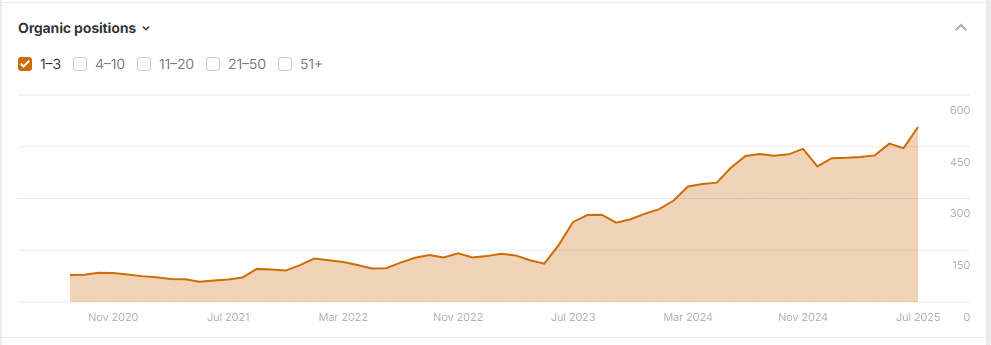$3.8 Million in Pipeline Sourced From Organic Search in 12 Months
Through our SaaS SEO and content marketing services, our client, a leading enterprise AI SaaS company in the financial compliance and fraud prevention sector, generated $3.8M in pipeline directly from organic search in the first 12 months of the engagement.


“I just want y’all to know how much I value all of you. Just with the work we’ve done so far we’ve been able to grab 9 organic opportunities at a total approx pipeline value of 260k”
– Revenue Marketing Lead
$3.8M
Pipeline sourced directly from organic search in the first 12 months
54.76%
More sales-qualified leads year over year in 6 month timeframe
280%
Increase in top 3 keyword rankings across their most valuable terms
The Challenge
Our point of contact realized something wild. Organic search was already driving the most revenue at the lowest cost, but it still wasn’t being prioritized. The site had strong product info and technical docs, but lacked a real SEO foundation or bottom-of-funnel content strategy.
We audited their existing content to find quick wins and mapped content gaps against competitors based on the company’s unique value proposition. Google didn’t have enough context, depth, or reason to trust the site as an authority. Budget had to be earned through results, so we built a plan to fix technical gaps, scale high-intent content, and make SEO a real pipeline channel.
The Strategy
1. Strengthening the Operational Backbone
We began with the foundation. That included a full analytics audit and GA4 migration to ensure clean tracking and accurate data across properties. For a growth-focused enterprise SaaS company, reliable attribution and user journey data are non-negotiable. Our technical SEO audit surfaced key issues that were limiting crawlability, slowing down indexation, and hurting overall site health. We built a prioritized implementation plan so their team could execute without disrupting other roadmap priorities.
2. Building a Content Engine Around Strategic Priorities
Next, we audited all existing content and assigned clear actions based on value and performance. We aligned top business units with keyword clusters tied to each stage of the buying journey. That allowed us to identify gaps and low-hanging opportunities. One of our earliest plays was optimizing a core solution page to target their highest priority commercial-intent keyword. That single move created a noticeable lift in both rankings and early-stage conversions within 90 days.
3. Scaling Content Production and Domain Authority
With strategy in place, we ramped content production. Every piece went through a brief-first process that ensured alignment with both search intent and buyer expectations. Meanwhile, we launched a focused link acquisition effort to build authority across priority keyword groups. Page-level SEO improvements happened in parallel, reinforcing performance gains and improving indexation across the board.
4. Operationalizing for Long-Term Growth
After completing our foundational work, we moved into the ongoing growth phase. This includes monthly KPI reviews focused on pipeline generation, consistent content deployment, and ongoing technical improvements. Every quarter, we re-evaluate keyword performance, adjust our content strategy, and optimize high-performing pages for even stronger results. This is not a one-time sprint. It’s a structured growth program built to turn organic search into a core revenue channel.
The Results
Organic search continued to grow and do the heavy lifting as one of the company’s most valuable growth channels, generating $3.8 million in sourced pipeline within the first 12 months. Sales-qualified leads increased by 54.76% year over year, driven by higher-intent content and better alignment with how buyers actually search.
Top 3 keyword rankings across priority terms grew by 280%, expanding visibility exactly where it mattered most. Within the first 90 days, organic conversion rates improved by 10.19%, a direct result of technical fixes, better UX, and content that converted. SEO wasn’t just working, it became a core engine for qualified demand at scale.

